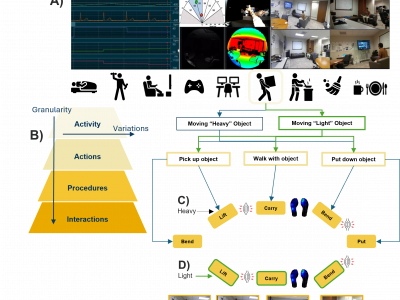Artificial Intelligence

We have developed three datasets, referred to as ER-C, Mito-C and Nucleus-C, respectively, for benchmarking robustness of DNN models against corruptions and adversarial attacks in semantic segmentation of fluorescence microscopy images. Degraded images in these three datasets are synthesized from raw images along with their manually annotated segmentation labels in the ER, Mito, and Nucleus datasets [1,2], respectively.
- Categories:
 114 Views
114 ViewsThis dataset focuses on the redevelopment and psychometric evaluation of the Adversity Response Profile for Indian Higher Education Institution (ARP-IHEI) students, emphasizing its importance in understanding how individuals respond to adversity. The data were gathered from a sample of 122 second year students at school of computing, MIT Art, Design and Technology University students. Read_me file contains questionnaire.
- Categories:
 197 Views
197 Views
The large and diverse access to data sources in healthcare has boosted the application of novel computer techniques that can extract meaningful information to improve patients' prognoses and other important medical uses. However, current systems require the professional to manually type the information, which increases the risk of transcription errors and cross-contamination. We propose an automated system that allows healthcare professionals to dictate clinical information that can be transcribed and analyzed.
- Categories:
 95 Views
95 Views
This dataset comprises over 38,000 seed inputs generated from a range of Large Language Models (LLMs), including ChatGPT-3.5, ChatGPT-4, Claude-Opus, Claude-Instant, and Gemini Pro 1.0, specifically designed for the application in fuzzing Python functions. These seeds were produced as part of a study evaluating the utility of LLMs in automating the creation of effective fuzzing inputs, a method crucial for uncovering software defects in the Python programming environment where traditional methods show limitations.
- Categories:
 176 Views
176 ViewsThis dataset includes environmental perception, vehicle motion status, and battery consumption during vehicle operation. The dataset is collected by human operators during the safe and smooth operation of vehicles. By dividing the hazardous areas in the current environment of the vehicle and processing them, a radar map of the hazardous areas is generated; The vehicle motion status section contains the position information (x, y, z) and kinematic information (v, w, a, alpha, beta, gamma) of the vehicle.
- Categories:
 691 Views
691 Views
This study used boots, aircraft, cells, pliers, and guitars from 2D shapes included in the literature as data sets to test modeling success. These 2D shapes, which are mostly not publicly available data sets, form the target curves of IP. In this study, hand drawings with a curved structure were used in modeling, where the success of fitting precision could be better determined.
- Categories:
 67 Views
67 ViewsBrain-Computer Interface (BCI) is a technology that enables direct communication between the brain and external devices, typically by interpreting neural signals. BCI-based solutions for neurodegenerative disorders need datasets with patients’ native languages. However, research in BCI lacks insufficient language-specific datasets, as seen in Odia, spoken by 35-40 million individuals in India. To address this gap, we developed an Electroencephalograph (EEG) based BCI dataset featuring EEG signal samples of commonly spoken Odia words.
- Categories:
 302 Views
302 ViewsThe dataset consists of around 335K real images equally distributed among 7 classes. The classes represent different levels of rain intensity, namely "Clear", "Slanting Heavy Rain", "Vertical Heavy Rain", "Slanting Medium Rain", "Vertical Medium Rain", "Slanting Low Rain", and "Vertical Low Rain". The dataset has been acquired during laboratory experiments and simulates a low-altitude flight. The system consists of a visual odometry system comprising a processing unit and a depth camera, namely an Intel Real Sense D435i.
- Categories:
 202 Views
202 ViewsThe DARai dataset is a comprehensive multimodal multi-view collection designed to capture daily activities in diverse indoor environments. This dataset incorporates 20 heterogeneous modalities, including environmental sensors, biomechanical measures, and physiological signals, providing a detailed view of human interactions with their surroundings. The recorded activities cover a wide range, such as office work, household chores, personal care, and leisure activities, all set within realistic contexts.
- Categories:
 615 Views
615 Views
Latent fingerprint identification is crucial in forensic science for linking suspects to crime scenes. Latent examiners obtain unique, reliable evidence by revealing hidden prints through advanced techniques. However, latent fingerprints often are partial prints with undesirable characteristics such as noise or distortion. Due to these characteristics, identifying the physical details of a latent fingerprint, known as minutiae, is a complex task. Recent publications found that there are subsets on one minutia in latent fingerprints that, when removed, increase the matching score.
- Categories:
 165 Views
165 Views


